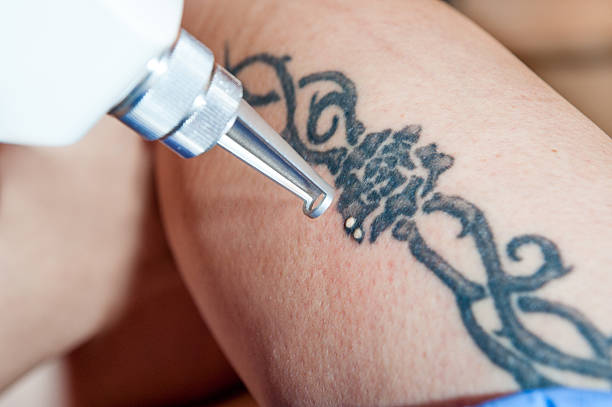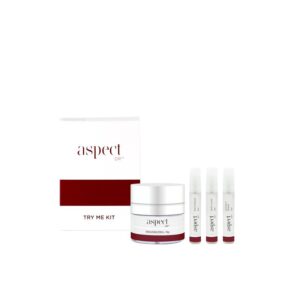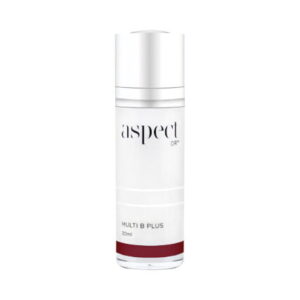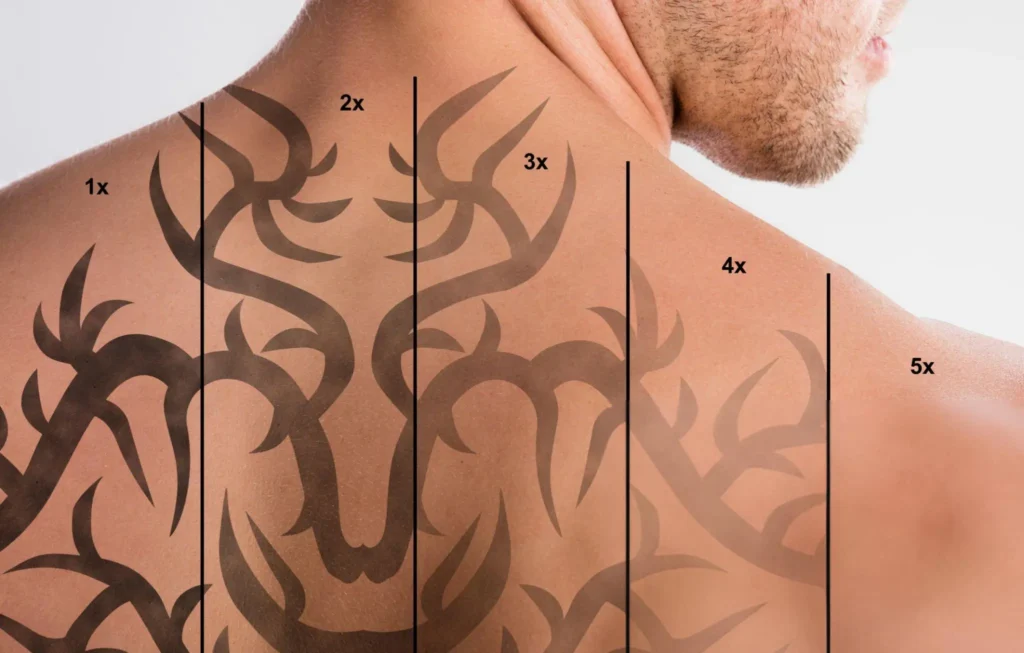Laser Tattoo Removal Aftercare – A Detailed Guide
Getting laser tattoo removal is just the first step. What you do after treatment makes all the difference between smooth, healthy skin and painful complications. This guide covers everything you need to know about laser tattoo removal aftercare. You’ll learn how to speed up healing, avoid scarring, and get the best tattoo removal results possible.
What Happens to Your Skin After Laser Treatment
Laser tattoo removal uses focused light beams to break down tattoo ink particles. Your immune system then removes these broken particles from your body. The treated area will look and feel different right after your session. This is normal and part of the healing process. Immediate changes you might see:
- Redness and swelling
- White frosting effect on the skin
- Blisters or crusting
- Tenderness when touched
Your skin needs time to recover between tattoo removal treatments. Most people need 6-8 weeks between sessions for complete healing.
First 24 Hours After Treatment
The first day sets the tone for your entire recovery. Follow these steps carefully.
Keep the Treatment Area Clean
Wash your hands before touching the treated area. Use lukewarm water and gentle soap to clean the skin. Pat dry with a clean towel – never rub.
Apply Ice for Comfort
Use an ice pack wrapped in a thin cloth for 10-15 minutes at a time. This reduces swelling and numbs pain. Take breaks between ice applications. Never put ice directly on your skin. This can cause frostbite and slow healing.
Start Your Aftercare Routine
Apply a thin layer of antibiotic ointment as recommended by your tattoo removal specialists. This prevents infection and keeps the area moist. Cover with a sterile bandage if your practitioner advises. Change bandages daily or when they become wet or dirty.
What to Avoid
Don’t take hot showers or baths for 24 hours. Heat increases swelling and can damage healing tissue. Avoid alcohol and aspirin. These thin your blood and can increase bruising. Skip the gym for at least 24 hours. Sweating can irritate the treatment area and increase infection risk. Learn More: https://skinduced.com.au/treatments/laser-hair-removal/
Recommended Serums and Creams For Tattoo Removal Aftercare:
Week 1: Critical Healing Phase
The first week determines how well your skin heals. Many side effects appear during this time.
Daily Care Steps
Clean the area twice daily with mild soap and water. This removes bacteria and dead skin cells. Apply a thin layer of healing ointment after each cleaning. Your laser treatment provider will recommend the best product for your skin type. Keep the area covered with loose, breathable clothing. Tight clothes can rub against healing skin and cause irritation.
Watch for Normal Healing Signs
Blisters may form 2-3 days after treatment. This is your body’s natural response to laser treatment. Don’t pop or pick at blisters. Scabbing usually starts around day 3-5. Scabs protect new skin underneath. Let them fall off naturally. Itching becomes stronger as healing progresses. This means your skin is repairing itself.
Red Flags to Watch For
Call your practitioner immediately if you notice:
- Pus or yellow discharge
- Red streaks extending from the treated area
- Fever or chills
- Severe pain that gets worse instead of better
- Bad smell from the treatment area
These signs could indicate infection, which needs prompt medical attention.
Weeks 2-4: Active Healing
Your skin works hard to repair itself during this phase. The surrounding skin starts to return to normal.
Continue Gentle Care
Keep cleaning the area daily. Switch to fragrance-free moisturizer once scabs start falling off. Protect the area from friction. Wear loose clothing and avoid activities that cause rubbing. Stay hydrated by drinking plenty of water. Your immune system needs hydration to remove tattoo ink particles effectively.
Sun Protection is Critical
The treated area is extremely sensitive to UV rays. Even 5 minutes of sun exposure can cause permanent pigment changes. Use sunscreen with SPF 30 or higher every day. Reapply every 2 hours if you’re outside. Cover the area with clothing when possible. This provides the best protection during the healing process. Australian sun is particularly harsh. Even cloudy days have strong UV rays that can damage healing skin. Proper laser tattoo removal aftercare includes diligent sun protection.
Exercise Precautions
Light exercise is okay after the first week. Start with gentle walks and basic stretching. Avoid swimming pools, beaches, and hot tubs until fully healed. Chlorine and bacteria can cause infections. Wipe away sweat immediately during workouts. Salt in sweat can irritate healing skin.
Weeks 4-8: Late Healing Phase
Most visible healing happens during this time. Your skin prepares for the next tattoo removal treatment.
Transition Your Care Routine
Switch to regular moisturizer as your skin tolerance improves. Look for products with ceramides or hyaluronic acid. Continue sun protection religiously. New skin remains vulnerable for months after laser treatment. Gentle exfoliation can help remove dead skin cells. Use a soft washcloth or mild scrub once weekly.
Monitor Your Progress
Take photos weekly to track fading. This helps you and your practitioner assess tattoo removal results. Note any areas that seem to heal differently. Some parts of tattoos respond better to laser technologies than others. Keep a healing diary. Write down what works well and what causes irritation.
Managing Side Effects and Complications
Every person heals differently. Knowing how to handle common issues keeps you on track.
Dealing with Blisters
Small blisters are normal and usually heal within a week. Keep them clean and covered. Large blisters might need professional drainage. Don’t attempt this yourself – call your practitioner. Broken blisters should be treated like open wounds. Clean gently and apply antibiotic ointment. Managing blisters correctly is a crucial part of laser tattoo removal aftercare.
Reducing Scarring Risk
Follow aftercare instructions exactly. Most scarring happens when people skip proper care. Don’t pick at scabs or healing skin. This damages new tissue and increases scar formation. Massage the area gently once fully healed. This improves blood flow and skin texture. Following proper laser tattoo removal aftercare steps prevents most scarring issues. Consider silicone gel sheets if you’re prone to scarring. These can reduce scar visibility.
Pain Management
Over-the-counter pain relievers work well for most people. Follow package directions carefully. Cool compresses provide relief without medication. Use for 15 minutes several times daily. Distraction techniques help during uncomfortable healing phases. Try reading, music, or gentle hobbies. Call your practitioner if pain becomes severe or interferes with daily activities. Read More: Best Laser Clinic In Newcastle
Nutrition and Lifestyle for Better Healing
Your overall health affects how quickly you heal from effective laser tattoo removal. Following good laser tattoo removal aftercare includes supporting your body with proper nutrition.
Foods That Support Healing
Protein helps build new skin tissue. Eat lean meats, fish, eggs, or plant-based proteins daily. Vitamin C supports collagen production. Include oranges, berries, peppers, and leafy greens in your diet. Zinc speeds wound healing. Good sources include nuts, seeds, and whole grains. Stay hydrated with water. Aim for 8 glasses daily to help your immune system function properly.
Lifestyle Factors
Get adequate sleep. Your body repairs itself most effectively during rest. Manage stress through relaxation techniques. High stress can slow the healing process. Don’t smoke or use tobacco products. These reduce blood flow and delay healing significantly. Limit alcohol consumption. Alcohol interferes with immune system function and healing.
Preparing for Your Next Session
Most people need multiple treatments for complete tattoo removal. Proper preparation improves results. Your laser tattoo removal aftercare continues between sessions to ensure optimal outcomes.
Timing Between Treatments
Wait at least 6-8 weeks between sessions. This allows complete healing and maximizes laser effectiveness. Your practitioner will assess healing before scheduling the next appointment. Don’t rush this process. Some areas may need longer healing time. Face and hands often require 8-10 weeks between treatments.
Pre-Treatment Preparation
Avoid sun exposure for 4 weeks before your next session. Tanned skin doesn’t respond as well to laser treatment. Stop using products with acids or retinoids one week before treatment. These can increase skin sensitivity. Stay well-hydrated in the days before your appointment. This supports your immune system’s ability to process tattoo ink.
Long-Term Skin Care After Tattoo Removal
Even after your tattoo removal process is complete, your skin needs ongoing care. Long-term laser tattoo removal aftercare protects your investment and maintains healthy skin.
Sun Protection for Life
Previously treated areas remain more sensitive to sun damage. Continue using sunscreen daily. Watch for any color changes in treated areas. Report unusual pigmentation to your practitioner. Consider wearing protective clothing during peak sun hours, especially in Australia’s intense climate.
Ongoing Skin Health
Use gentle, fragrance-free products on treated areas. Harsh chemicals can cause irritation even after healing. Moisturize regularly to maintain skin elasticity and appearance. Annual skin checks with a dermatologist help monitor any changes in treated areas.
Common Mistakes to Avoid
Learning from others’ mistakes can save you pain and complications. These laser tattoo removal aftercare mistakes can delay healing and cause problems.
Don’t Rush the Process
Skipping healing time between treatments reduces effectiveness and increases side effects. Picking at healing skin creates scars and can cause infections. Ignoring aftercare instructions because you “feel fine” often leads to problems later. Proper laser tattoo removal aftercare requires consistency even when you feel good.
Avoid These Products
Don’t use hydrogen peroxide or alcohol on healing skin. These can damage new tissue. Skip harsh scrubs or exfoliants during the first month of healing. Avoid products with fragrances or dyes until skin is completely healed.
Activity Restrictions
Don’t return to intense exercise too quickly. Sweating and friction can cause complications. Avoid hot environments like saunas or hot yoga classes during healing. Don’t expose treated areas to chlorinated water until fully healed.
When to Contact Your Practitioner
Knowing when to seek help prevents minor issues from becoming major problems.
Normal vs. Concerning Symptoms
Normal healing includes redness, swelling, and mild discomfort that gradually improves. Concerning symptoms include increasing pain, pus, red streaks, or fever. Trust your instincts. If something doesn’t feel right, contact your tattoo removal specialists.
Follow-Up Appointments
Attend all scheduled check-ups even if you feel fine. Professional assessment catches problems early. Ask questions about anything that concerns you. Your practitioner wants you to heal successfully. Take photos of any concerning changes to show during appointments.
Frequently Asked Questions
How long does it take to fully heal from laser tattoo removal?
Complete healing typically takes 6-8 weeks after each session. The treated area may remain slightly sensitive for several months.
Can I work out after laser tattoo removal?
Wait at least 24-48 hours before light exercise. Avoid intense workouts for one week to prevent complications from sweating and friction.
What should I do if my skin blisters after treatment?
Small blisters are normal and part of the healing process. Keep them clean and covered. Don’t pop them. Contact your practitioner if blisters are large or numerous.
How do I know if my tattoo removal is healing properly?
Normal healing shows gradual improvement in swelling, redness, and discomfort. The area should not have pus, increasing pain, or red streaks extending from the treatment site.
Can I use makeup to cover the treated area?
Avoid makeup on the treatment area for at least one week or until any open wounds heal completely. When you do use makeup, choose gentle, non-comedogenic products.
Is it normal for the tattoo to look darker after treatment?
Yes, tattoos often appear darker immediately after laser treatment due to swelling and the way light reflects off treated skin. This fades as healing progresses.
How can I speed up the tattoo removal healing process?
Follow aftercare instructions exactly, stay hydrated, eat nutritious foods, get adequate sleep, and protect the area from sun exposure. Don’t pick at healing skin.
What happens if I get an infection after laser tattoo removal?
Contact your practitioner immediately if you suspect infection. Signs include pus, increasing pain, red streaks, fever, or bad odor from the treatment area.






